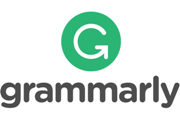AN ANALYSIS OF ILLOCUTIONARY ACTS OF TEACHER-STUDENT INTERACTION IN AN ENGLISH CLASSROOM
Keywords:
illocutionary speech acts, speech acts, PragmaticsAbstract
This study aims to examine the illocutionary acts performed by the teacher in the English class at Bimbingan Belajar Lita (BBL) Sumedang. It seeks to identify and analyze the various types of illocutionary acts and which type that has the greatest perlocutionary effect used by the teacher. To accomplish this, the study applies Austin’s (1962) theory, which divides speech acts into three types: locutionary, illocutionary, and perlocutionary, as well as Searle’s (1974) theory, which divides illocutionary acts into five categories: assertive, directive, commissive, expressive, and declarative. This study employs descriptive qualitative method, analyzing data obtained by observations, documentation, recording, and its scripts. The findings reveal a total of 174 illocutionary acts and are identified as four types of illocutionary acts produced by the English teacher at BBL Sumedang, which are directives, expressives, representatives, and commissives. The most dominant illocutionary acts produced by the teacher is directives with 87 utterances or 50%, while the commissives are the lowest with 8 utterance or 4.6%. Moreover, there are three types of illocutionary acts that contain perlocutionary effects used by the English teacher at BBL Sumedang, which are directives, representatives, and commissives. Commanding act is the most dominant type of illocutionary act that contain perlocutionary effect, but questioning act has the greatest perlocutionary effect because asking lots of questions will make students active in the long term.







